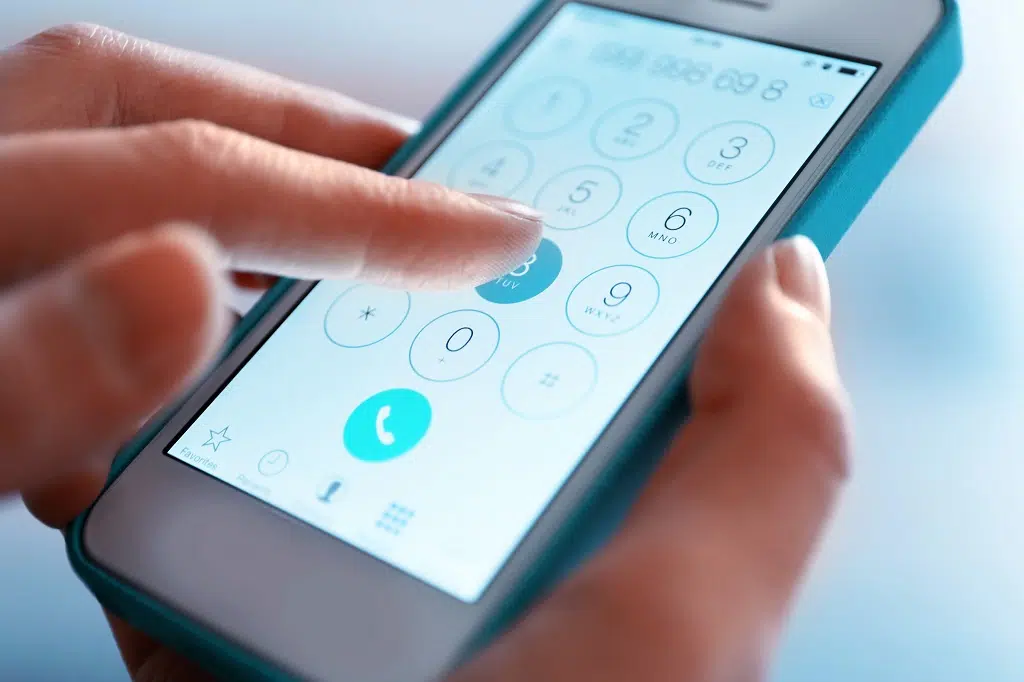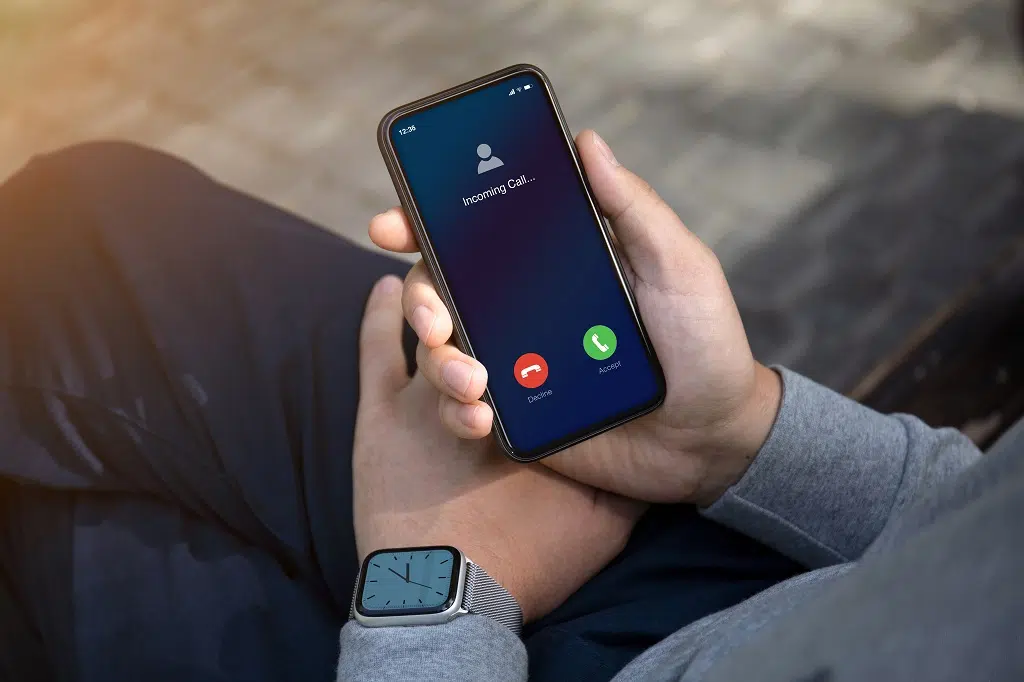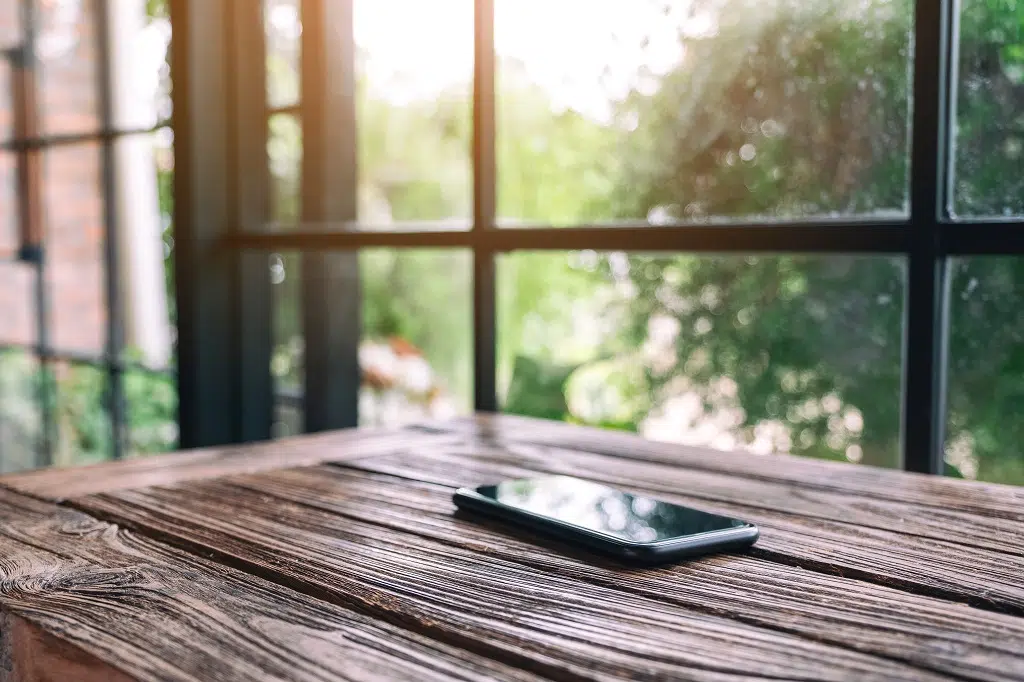Here’s what the beep means before someone picks up the phone, in addition to the regular dial tone:
Most of the time, this beep is an indicator on your phone (or phone line) that is telling you that the phone is being answered.
It’s a setting that can be toggled.
There are other phone noises that could potentially cause a beep before a phone is answered, but each would require some type of special circumstance.
So if you want to learn all about what the beep you hear means exactly before someone picks up the phone, then you’re in the right place.
Let’s jump right in!

What Causes the Beep on Your Phone? (9 Things)

In the vast majority of cases, this is a simple phone feature.
Most modern phones are digital, so any noises you hear are produced by the digital system.
It’s not a random device interfering.
Instead, the digital system is providing an indicator that a call has been answered.
You might hear a beep or a vibration.
You can typically control this setting on a smartphone.
You’ll find it under call settings or notifications.
#1 Vibrations When the Call Is Picked Up

This is actually referring to the vibration a phone can do to indicate that it is ringing.
It sounds a little weird, but this vibration does cause noises, and they can manifest in a couple of ways.
First, if the receiving phone is vibrating when the call is answered, the vibrations can transmit sound directly over the phone line.
It can potentially sound like a beep, and you will hear it before the voice of the person answering.
#2 Phone Timers

Plenty of phone features can create a beeping sound, and one of the most common is a phone timer.
These come in a few varieties.
You can have them installed as an app, as a service, or as a native function.
Phone timers are used for a lot of reasons, but they all essentially do the same thing.
They let you know how long you have been on a specific call.
Many phone timers start the sequence as soon as you hit send.
If it takes a bit for someone to answer, the timer might give you a beep when the other person picks up the phone.
#3 Other Internal Call Sounds

In addition to phone timers, there are a handful of other internal call sounds.
These are for smartphones and digital phones, and the sounds are created on your end.
The full range of sounds and their functions varies, but you can usually control them in the sound settings.
Internal call sounds can let you know about call waiting or send any other number of notifications to you by creating a beep.
Any number of them can sound off before a person you are calling answers the phone.
#4 Circuits Connecting

This is a lot less likely, but it is still a possible reason for the sound you are hearing.
This applies to analog phone systems that use plain old phone lines and switches.
In order to establish a call on these systems, the circuits have to go through a series of switches.
Eventually, the correct lines are connected, and the phone call works.
When circuits connect, they can cause the line to experience “ghost” sounds.
Essentially, the change in the connection can create or rebound noises, and sometimes, that noise can be a beep.
This is not a problem with digital phones.
It’s also not likely an issue if you consistently hear the beep before someone answers.
#5 Earpiece Tones

Earpiece tones are the analog equivalent to internal call sounds.
These are noises that are engineered to be easily audible over the phone, and each tone tells you something specific.
They are all set to predetermined sound frequencies (or pitches), which means that they operate on an industry standard.
When you hear any of these tones, the sound is created at different points in the system and played through your earpiece.
Most of these can be heard before a call is answered.
On top of that, if they are interrupted just as they begin to play, they can sound more like a random beep than the familiar tones you expect.
#6 Busy Signal

If you are old enough, you know the sound of a busy signal.
It repeats rather frequently, and the sound feels continuous.
It is unlikely to sound like a single beep unless the busy signal is dropped very shortly after connecting to the busy line.
In the United States, busy signals are set to either 480 Hz or 620 Hz.
This makes it the highest pitch among the earpiece tones that are standard for most phones.
#7 Dial Tone

Dial tones are also continuous, and you should hear them before dialing or connecting to another line.
This sound indicates that your line is free and functioning, so you’re all good to place a call.
Again, a dial tone is unlikely to be the beep you hear before someone picks up, but there are situations where a dial tone could echo on a line and come back at a weird moment during the call.
Dial tones are set at 350 Hz or 440 Hz.
This is the lowest of the earpiece tones.
As a bonus, for anyone who is into music, 440 Hz is the frequency used to tune middle A in common western music.
It’s the exact pitch of a standard dial tone.
#8 Ringing

You know what a ringing phone is.
This is one of the few sounds, which has been preserved in the days of digital smartphones.
Ringing tones are set to 440 Hz or 480 Hz.
This pitch is right in between the other two.
It’s hard to imagine that someone would confuse a ringing phone with a beep when they are waiting for someone to answer.
But sounds can get distorted and delayed on analog phone systems to a point where there is an outside chance that this could happen.
#9 Unavailable

The unavailable signal is considerably different from the other earpiece tones.
The rest are single-frequency tones that give you a clear idea of something that is happening with a phone line.
Conversely, unavailable messages start with a series of tones and then typically provide a recorded voice message.
You have probably heard a canned response that goes something like this, “We’re sorry. But the number you have dialed cannot be reached at this moment. Please hang up and try again.”
The exact message might vary, but you get the idea.
If the tones at the beginning of one of these messages cut off, it could sound more like a beep.

